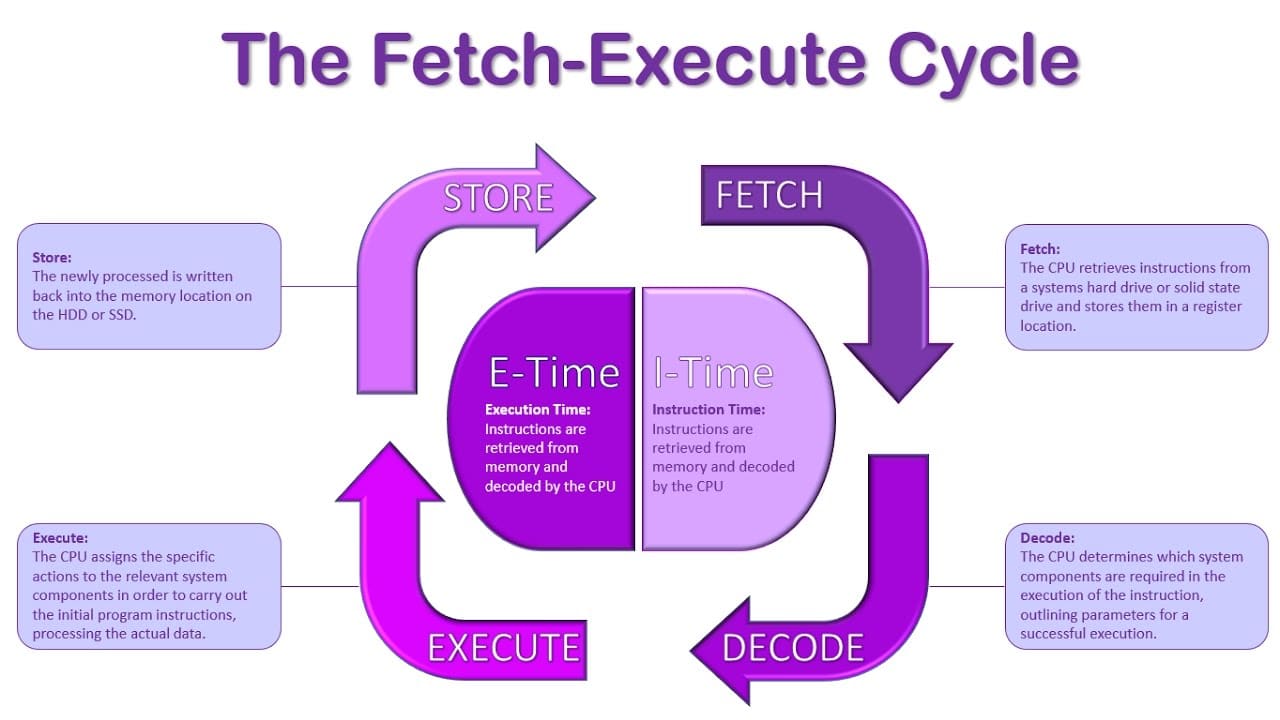The fetch-execute cycle is an important part of the instruction cycle in computer processors. It is the process by which instructions are fetched from memory, decoded, and executed by the processor. The cycle is composed of four distinct steps: fetch, decode, execute, and write back.
The fetch step involves retrieving an instruction from memory and bringing it into the CPU. The decode step involves decoding the instruction, which can involve translating the binary value into actual operations that will be executed. The execute step then executes the decoded operation. Finally, the writeback step stores the results of the operation in memory.
This cycle is the fundamental process by which instructions are executed; it is essentially the “building blocks” of any processor’s operation. It is this cycle which is repeated indefinitely by a processor in order to process instructions from programs.
The fetch execute cycle is an essential concept for those studying computer processors and computer programming. Knowing the details of this cycle and how it functions is essential for obtaining a detailed understanding of processor operation. This knowledge is useful for software and hardware developers, as it can provide insight into the low-level workings of a processor.






